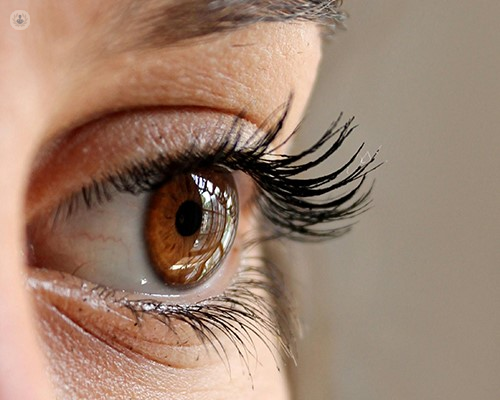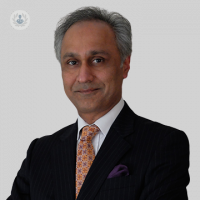Vitrectomy: A guide
Written by:Vitrectomy is a surgical procedure performed on the eye to remove the vitreous humour, a gel-like substance that fills the space between the lens and the retina. This surgery is typically recommended for patients experiencing problems in the retina or vitreous, which can significantly impact vision. If you have been advised to undergo a vitrectomy, it is essential to understand the procedure, its indications, and the recovery process. In his latest online article, Mr Manzar Saeed gives us his insights.

What is Vitrectomy?
Vitrectomy involves the removal of the vitreous humour from the eye. The vitreous is a clear gel that helps maintain the eye's shape. However, certain conditions necessitate its removal to prevent or treat vision problems. These conditions include retinal detachment (where the retina peels away from its underlying layer), vitreous haemorrhage (bleeding within the eye), and macular holes (small breaks in the macula, the central part of the retina responsible for sharp vision).
Why is Vitrectomy performed?
Vitrectomy is performed to address several serious eye conditions. Some common reasons include:
Retinal detachment: This occurs when the retina separates from the back of the eye, potentially leading to permanent vision loss if not treated promptly.
Vitreous haemorrhage: Bleeding into the vitreous can obscure vision. Vitrectomy helps clear the blood to improve vision and allow the surgeon to address the underlying cause of the bleeding.
Macular holes and puckers: These conditions affect the macula and can distort central vision. Vitrectomy helps repair these issues, potentially restoring or stabilising vision.
Diabetic retinopathy: Advanced stages of this diabetes-related eye disease can lead to significant retinal damage. Vitrectomy allows the surgeon to remove scar tissue and repair the retina.
The procedure
During a vitrectomy, the surgeon makes tiny incisions in the eye and inserts small instruments to remove the vitreous. The space left by the vitreous is often filled with a saline solution, gas bubble, or silicone oil to maintain the eye's shape and support the retina as it heals. The procedure is usually performed under local anaesthesia with sedation, meaning you will be awake but comfortable and pain-free.
Recovery and aftercare
Post-surgery, you may need to keep your head in a specific position, especially if a gas bubble was used to hold the retina in place. This positioning helps the bubble press against the retina, aiding its reattachment. Initially, your vision may be blurry, but it should gradually improve as your eye heals. It is crucial to follow your surgeon's instructions and attend all follow-up appointments to monitor your recovery. Possible complications include infection, increased eye pressure, and cataract formation, which should be discussed with your healthcare provider.
Mr Manzar Saeed is an esteemed consultant ophthalmic surgeon. You can schedule an appointment with Mr Saeed on his Top Doctors profile.


